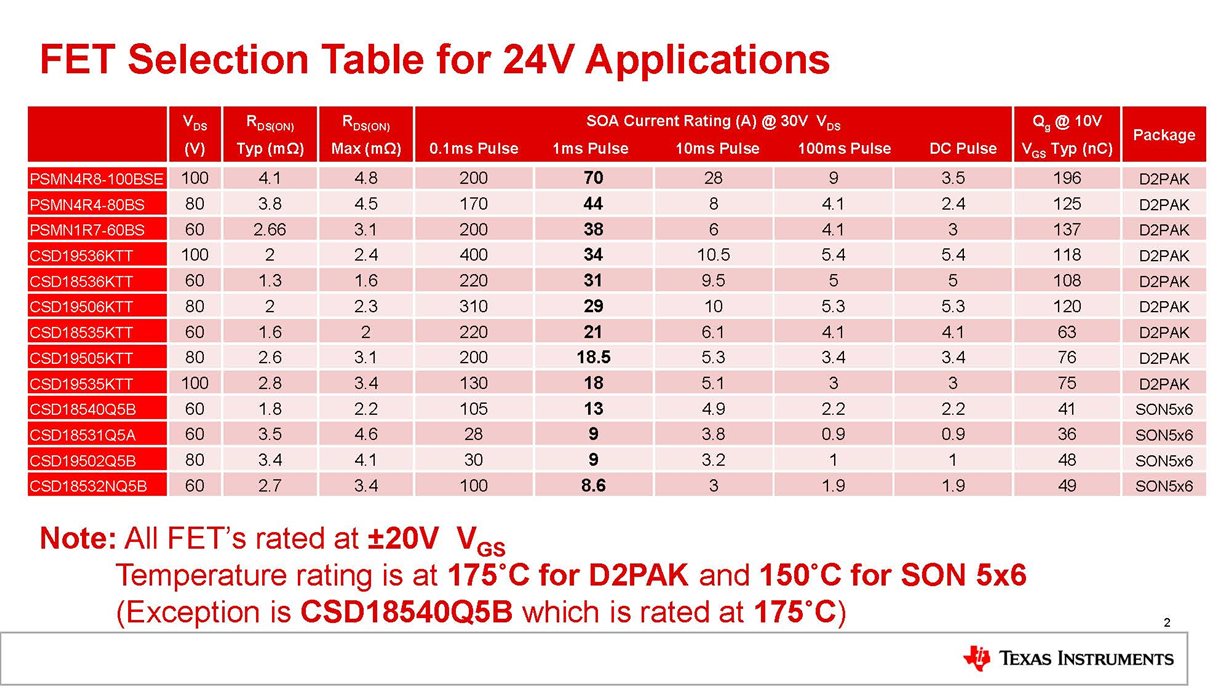The "M1 Selection" section of the TPS2490 datasheet recommends against a "FETs whose
safe operating area (SOA) curves display multiple slopes on the same line (e.g. a line whose time parameter is a
constant) in the region of high voltage and low current generally are susceptible to secondary breakdown and are
not strong candidates for this application."
However its seems that most new low Rds_on FETs are trench-type FETs that have a SOA curve with secondary slope. Since it seems like using a trench-type FET is somewhat unavoidable, I'm looking for some advice on selecting a suitable TrenchFET.
The poor TrenchFET SOA curve is caused by a negative temperature coefficient of the Vth voltage. At low Vgs voltages and high Vds voltages, there is tendency for local hotspots to form on certain cells because the negative temperature coefficient for Vth overpowers the positive temperature coefficient for Rds_on.
In my application, I will likely need to parallel 2 FETs to get a low enough Rds_on. However, it doesn't seems like the trench-type FETs will share current when operating in linear mode. So instead of getting a 2x improvement in power handling, I will probably get an improvement of 1.1x or less.
In my application, I need a FET that can handle 20Amp continuous current with a 30V supply. Based on past experience, I'm guessing that I'll need about 10ms to charge the bulk capacitance with a 90W power limit.
While looking for potential FETs, I've noticed there a large variation in SOA curves between different series of FETs.
Some FETs are rated for 180W at 30Vds for 10ms while others can only handle 10W.
In my search I've found that NXP and IXYS seem to provide FETs with a decent SOA, whereas almost all new International Rectifier FETs have a terrible SOA.
Instead of wasting more time looking for better FETs, I'm wondering if anybody has recommendations on any family of low Rds_on FETs that have worked well?
-
Ask a related question
What is a related question?A related question is a question created from another question. When the related question is created, it will be automatically linked to the original question.


